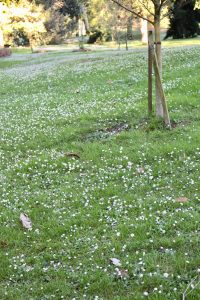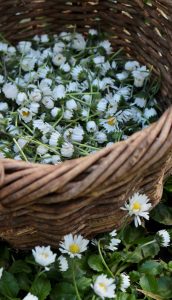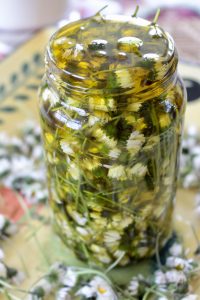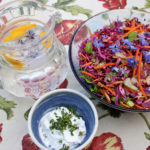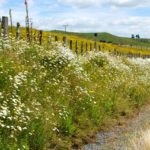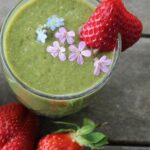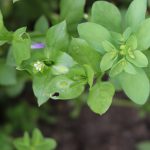Daisies are thick in lawns at the moment, mostly in shadier spots in lawns,
untended places and parks. I’ve recently seen huge thickly flowering patches in Yatton Park in Greerton, Tauranga where I went walking with our visiting Australian family. Claire my 15 year old niece made a daisy chain and wore it in her hair, an expression of her delight in seeing so many of these dainty spring fresh flowers. While this plant appears small and low to the ground with the starlight bright flowers there’s more to it than you might think. It’s also sometimes called English daisy and is a perennial that grows in a rosette with dark green spoon-shaped leaves and pretty flowers with white petals, often red-tipped, radiating out from a yellow centre. Its Latin name Bellis means pretty (isn’t that apt) and perennis means perennial. The flowers, one per stalk, close up at night (‘day’s eye’ is the origin of ‘daisy’) and on cloudy days. The stalks are leafless but hairy and grow up to 15 cm tall if not mown down. The leaves narrow to a broad stalk going into the centre of the plant. It normally flowers from spring to autumn but it can flower in a mild winter.
This little gem of a plant has an amazing range of applications. The flowers (though strong tasting) and leaves can be added to salads, soups and smoothies. The whole plant has a great reputation as a wound healer. Doctors accompanying Roman legions collected sacks of it to extract the juice and apply it to battle wounds, and ointments can also be made for bruises or wounds.
To make an ointment you first need to gather the fresh flowers (they need to be completely dry) and place
them in a jar with a plastic lid. Fill the jar with cold pressed olive oil. Make sure all the air bubbles rise to the top. Add more oil until the jar overflows a little.
Then add the lid, label with the date and put in a cool place for six weeks. After six weeks strain the oil. You can use as it is on bruises (It is said to be more effective than Arnica which makes sense for us as daisies are local and plentiful. Arnica has to be imported.)
Measure the oil and place in a double boiler. Next measure the beeswax. For 100ml oil you’ll need 10gms beeswax i.e. 10%. Heat the oil and the beeswax until the beeswax melts, then pour into jars and cap.
An infusion of the fresh and dried flowers is used as a blood purifier and for treating nasal congestion, rheumatism, arthritis, and liver and kidney disorders. Chewing the fresh leaves is said to be a cure for mouth ulcers. An insect spray can be made by pouring boiling water on the leaves, I want to try this. I suspect few people know the benefits of this humble little daisy.
